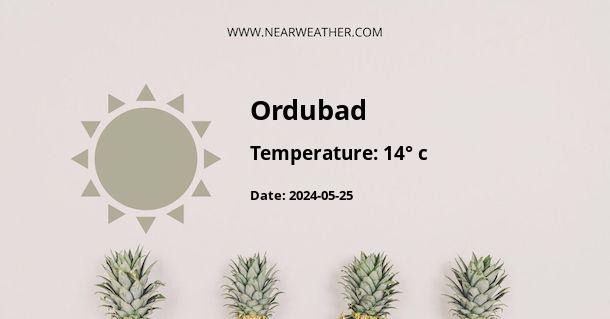Overview
Ordubad, a city located in the Nakhchivan Autonomous Republic of Azerbaijan, is known for its remarkable climate features. This city, nestled amidst mountains, offers a unique blend of climatic conditions that significantly influence its weather patterns throughout the year.
Climate Classification
Ordubad falls under the warm-summer Mediterranean climate (Köppen climate classification: Csb). This climate classification is characterized by warm-to-hot, dry summers and mild-to-cool, wet winters.
Seasonal Climate Variations
The following sections provide a detailed overview of the seasonal climate variations in Ordubad.
Spring
Spring in Ordubad, starting from March and lasting till May, is marked by gradually rising temperatures. The average high temperature starts at around 10°C in March and reaches up to 22°C by May. The average low temperature ranges between 0°C and 10°C. Rainfall is moderate, making the landscape lush and vibrant.
Summer
Summer, from June to August, is dry and warm in Ordubad. The average high temperature hovers around 30°C, while the average low temperature remains around 15°C. Despite these high temperatures, the humidity is quite low, making the heat bearable.
Autumn
Autumn in Ordubad, from September to November, is characterized by a gradual drop in temperature. The average high temperature decreases from 25°C in September to about 10°C in November. Meanwhile, the average low drops from 10°C to nearly 0°C. This season experiences relatively more rainfall than summer.
Winter
Winter, from December to February, is the coldest season in Ordubad. The average high temperature ranges between 5°C to 10°C, while the average low can drop below freezing, particularly in January and February. Snowfall during this season is quite common.
Annual Weather Summary
Overall, the annual weather in Ordubad is characterized by a warm-summer Mediterranean climate, with hot, dry summers and mild, wet winters. The average annual temperature is around 15°C, while the average annual rainfall is approximately 400mm.
Climate Impact on Local Life
The unique climate of Ordubad significantly impacts the lifestyle and economy of its residents. The warm summer and fertile soil provide ideal conditions for agriculture, particularly for growing fruits like apples, apricots, and pomegranates. The mild winter also allows for year-round livestock farming. Additionally, the pleasant climate attracts tourists, boosting the local tourism industry.
Climate Change
Like many other regions around the globe, Ordubad is experiencing the impacts of climate change. Rising temperatures, irregular rainfall patterns, and increased frequency of extreme weather events are some of the climate change indicators observed in this region. These changes pose significant risks to the local agriculture and water resources, highlighting the need for climate-resilient strategies and practices.
Conclusion
In conclusion, Ordubad's climate, characterized by warm summers and mild winters, plays a vital role in shaping the city's lifestyle, economy, and natural environment. However, as climate change continues to intensify, it is imperative to adopt sustainable practices to mitigate its impacts and safeguard the city's future.
References
- Climate-Data.org. (n.d.). Climate: Ordubad. Retrieved from https://en.climate-data.org/
- Köppen, V. (1936). Das geographische System der Klimate. In Handbuch der Klimatologie, Vol. 1, Part C (pp. 1-44). Berlin, Germany: Gebrüder Borntraeger.
- World Weather & Climate Information. (n.d.). Climate and average monthly weather in Ordubad (Nakhchivan), Azerbaijan. Retrieved from https://weather-and-climate.com/
A - Ordubad's Latitude is 38.905949 & Longitude is 46.023411.
A - Weather in Ordubad is 3° today.
A - Climate Conditions in Ordubad shows clear sky today.
A - Humidity in Ordubad is 50% today.
A - Wind speed in Ordubad is 3.24 km/h, flowing at 326° wind direction. today.
